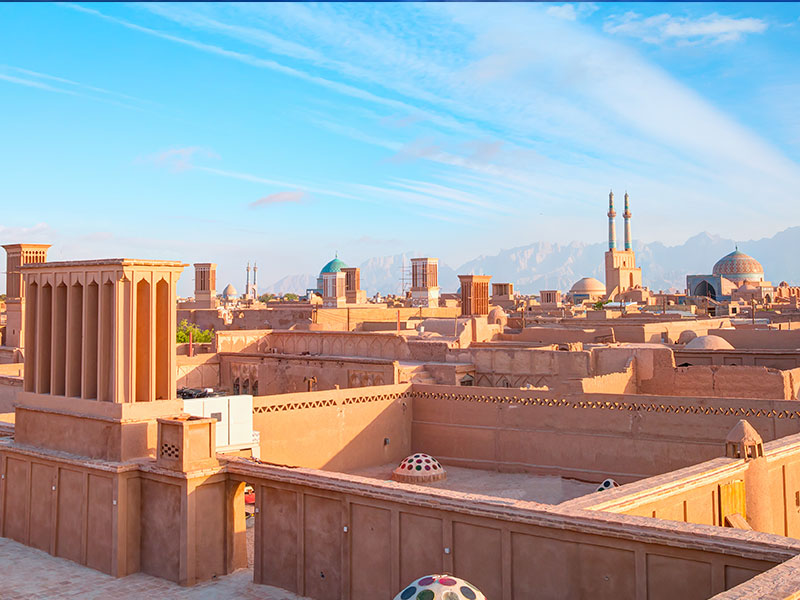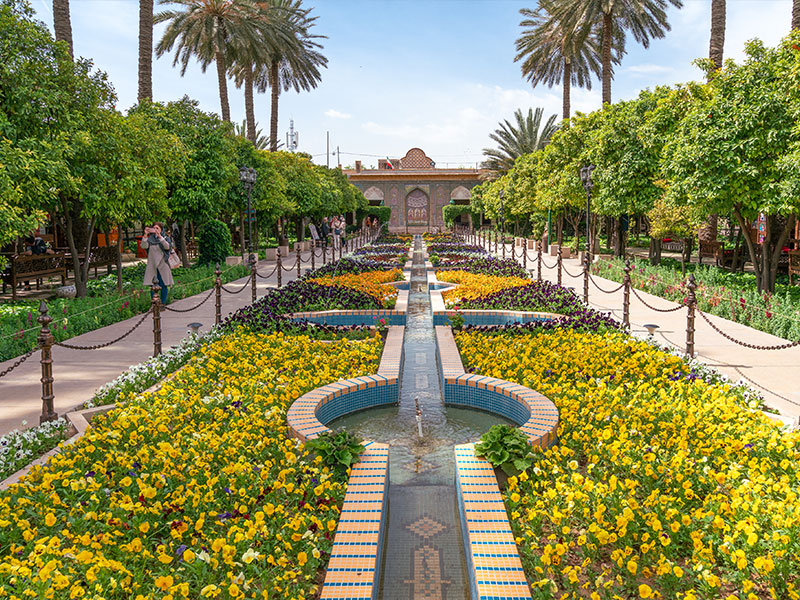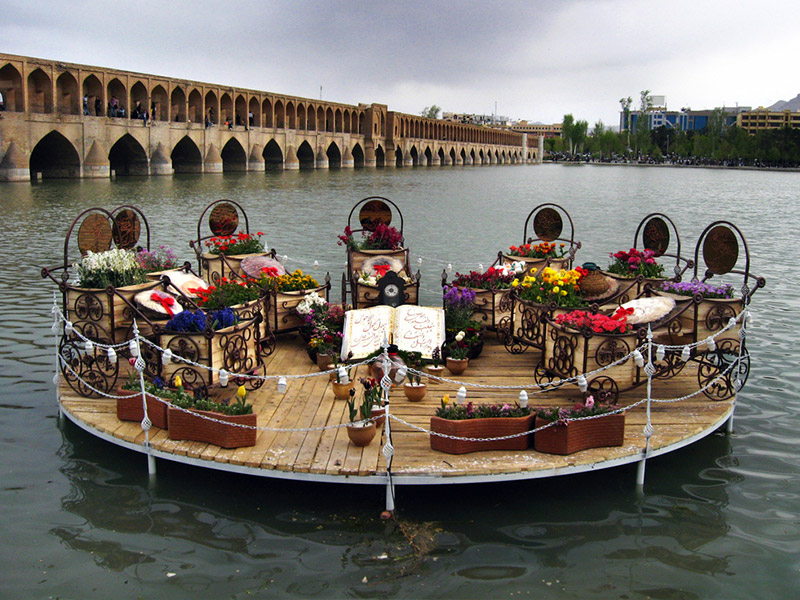Nowruz is an ancient ritual that is tied to the identity of Iranians and is still standing despite many enmities and obstacles throughout its three-thousand-year history. Nowruz comes with spring and becomes an excuse to get together and celebrate this festival of natural beauty.
Book Iran Air flights from London to Tehran and Tehran to London and tehran hotel with Eligasht uk:
Iranian Nowruz through Time
What is certain is that the Nowruz festival has been very popular among Iranian people since the Achaemenid dynasty, but there have been changes in the way it is celebrated throughout the years.
Achaemenid Nowruz
The person who announced Nowruz as a national holiday for the first time during the Achaemenid period is none other than Cyrus the Great. Cyrus, the founder of the Achaemenid dynasty in 538 BC, named this day as Nowruz. Apparently, the Nowruz festival lasted for almost two months, and during this time, things like promoting soldiers, cleaning public places and private houses, and pardoning convicts were common. Darius I chose Persepolis as the venue for Nowruz.
Sasanian Nowruz
The festival of Nowruz was celebrated with great splendor during the Sassanid period and lasted for 6 days, which was divided into two periods: the small Nowruz (1st to the 5th of Farvardin) and the big Nowruz (the 6th day of Farvardin). Each of the days of Nowruz belonged to one of the social classes of the people to serve the king.
The first day of Nowruz belonged to the general public. On this day, people came to see the king and set forward their demands. The second day was for peasants and servants of fire temples. On the third day of Farvardin, clerics, and religious leaders came to visit the king. On the fourth day, the king hosted members of the royal family and army commanders. The fifth day was dedicated to the visit of nobles. On the last day, the King’s advisers would come to visit. There was no leap year in the Sasanian calendar, so Nowruz could be celebrated in different seasons.
One of the most interesting customs of this period was that 25 days before the beginning of Nowruz, all kinds of beans and grains were planted on columns of raw clay. If these grains grew fast, it was an indication that the next year was going to come with a bountiful harvest. Lighting fire, and giving each other coins were other customs that were held during the days of the Sassanid kings during Nowruz.
Nowruz after Islam
After the arrival of Islam in Iran, the rulers opposed Iranian religions and rituals including Nowruz. Under the rule of the Umayyad and Abbasid caliphs, this was enforced by imposing heavy taxes. Although many Iranian celebrations and festivals were forgotten as a result, Nowruz remained. Through time, people added to Nowruz rituals, besides setting fire, sprinkling water on each other and giving gifts, cooking special foods, buying perfume, and wearing new clothes became common as well.
Before long, during Taherian, Samanian, and Al-Buyeh dynasties, poets were invited to the court of kings to read their poems about Nowruz. At the order of Malik Shah Seljukian, a number of Iranian astronomers made changes to the Iranian calendar. This group made calculations in which the number of days of the year changed from 365 days to 366 days every four years so that Nowruz is always held on the first day of Farvardin. This calendar became known as the Jalali calendar.
Safavid Nowruz
The Safavid era is the period in which Nowruz returned to its peak days. In 1597 AD, Shah Abbas Safavi held the Nowruz ceremony in the Naqsh Jahan mansion in Isfahan with great splendor and thus chose Isfahan as his capital.
On this day, before the start of the festival, astrologers would go to the roof of the royal palace and determine the exact time of the start of the festival by careful examination. Then, with the signal of this group, the sound of cannons, rifles, drums, and pipes would be raised and the people would be informed about the beginning of the new year. In the Safavid period, like the Iranian dynasties before Islam, there was a public festival going on for Nowruz. Safavid Nowruz lasted for 8 days, and every day a certain group of people went to see the king. The first day was dedicated to the common people and the last day to the close relatives of the king.
Dancing and drumming, fireworks, and performing comedy in front of Shah’s palace were among the events that were held during the Nowruz festival.
Qajar Nowruz
During the Qajar era, one hour before the New Year, all the courtiers gathered in Shah’s palace. Then the Shah would join this crowd and after a little talk and speech by the Khatib, bowing in front of the Shah, the court astrologer would inform the gunner about the beginning of the new year, and all the people would be informed of the beginning of the new year by firing a cannon. Then the king gave a feast to the members present in the court. In other cities, this festival was held in the presence of the governor of the same region.
Nowruz Today
Although many rituals of Nowruz have disappeared or the form and image of their celebration have changed, the festival is still celebrated every year by Iranians. Even those who are away from their homeland, celebrate Nowruz.
Some of the customs of the Nowruz Festival are the same in most parts of the country, but there are ceremonies that are held only in a certain region. In this part of the guide, we will focus on the special Nowruz rituals of each region of Iran.
Nowruz in Tehran
The people living in the capital welcome the Iranian New Year by preparing rice noodles with fried dates and raisins. This food is very strong and has a warm character, and eating it is associated with certain rituals.
Nowruz in Alborz
In the Alborz region, there is a phrase that translates into “unimportant Wednesday”. Apparently, the reason for such a name is that in the past, Iranians used to finish their work 5 days before the new year, and practically there was nothing left to do for the last 5 days of the year.
Iranian Nowruz: Nowruz in East Azerbaijan
In East Azerbaijan, before Nowruz, rural women draw a picture of a beautiful woman on top of the stove and place a mirror and a women’s comb under it so that Chershanbe Khatun can comb her hair. The popular belief is that this helps to fertilize the earth.
Another ritual that is popular among the people of East Azerbaijan is that they fill their jars with spring water and sing while jumping over the jars.
Iranian Nowruz: Nowruz in West Azerbaijan
In West Azerbaijan, they make a kind of goat with pieces of wood. People roll these wooden goats in the streets before Nowruz and sing Turkish songs at the same time and receive gifts from people.
On the last Wednesday of the year, the people of West Azerbaijan would fill a new jar with warm water and use this water to prepare morning tea. They used to drink this tea with breakfast while wearing their new clothes and believed that this would bring them good luck.
Iranian Nowruz: Nowruz in Chaharmahal and Bakhtiari
The women and children of Chaharmahal and Bakhtiari go out and pick fresh edible plants on the first Saturday of the year. According to the common belief of the people of this area, by doing this, evils and filth will be removed from their gardens and fields and they will harvest a better crop.
Iranian Nowruz: Nowruz in South Khorasan
In South Khorasan, it is customary for the groom’s family to bring gifts such as clothes, shoes, bags, rice, and meat to the bride’s family. The bride’s family prepares food from the gifts brought by the groom’s family and invites them to have a good time together and strengthen their family ties during Nowruz.
Iranian Nowruz: Nowruz in Sistan and Baluchistan
In the province of Sistan and Baluchistan, it is customary to throw all the pottery that was used throughout the year from the roof of the house and break them. The purpose of doing this was to drive away the evil spirits that have settled in these containers and caused unhappiness to the family members.
Iranian Nowruz: Nowruz in Yazd
Lighting fire is one of the ceremonies that the people of Yazd perform on the last night of the year. They believe that by doing this, they drive away the cold. In Yazd, the festival is divided into two parts; The last 10 days of Esfand, and the 10 days after Nowruz. Various rituals are performed in the second half, including Wednesday celebrations, breaking jars, cooking noodles and a kind of sweet bread, setting up Haftsin, cleaning houses, and buying new clothes.

Nowruz among Turkmens
One of the customs observed among the Turkmens in Nowriz is that after the construction of the special house, they weave white and black thread with beads, and hang them in front of the entrance of the house.
Another Turkmen tradition is that on Wednesday, they go to the desert and the plain, and when they return, they throw pebbles around seven times as to ward off evils and defilements.
Nowruz in Razavi Khorasan
In Razavi Khorasan, people drink milk a few moments before the new year as they believe that by drinking milk during the year, their skin will be soft and shiny.
In order to earn sustenance and wealth, when sitting around the table, they would take a coin or a few grains of rice in their fists and men would eat chicken heads, hearts, livers, bones, and necks.
Nowruz in Zanjan
In the days before the new year, the people of Zanjan used to make white plaster with what they could find in the plains and mountains to paint their walls with a broom and they would draw patterns of flowers and trees on the wall.
Nowruz North Khorasan
One of the common Nowruz rituals in North Khorasan is the jar-breaking ceremony; A jar is filled with some water and a coin is thrown into it, then a member of the family, who is usually the son, throws it down from the roof so that the jar breaks and the water splashes. The jar is considered a sign of dirt and year-long sorrows. Also, to get rid of dirt, they would give their copper dishes to coppersmiths to whiten them.
Nowruz in Fars
In Shiraz, special rituals are held during Nowruz. People have a special ceremony for their orange tree. If their tree gives a small load, the woman of the house invites the neighbor women; the woman of the house takes a saw to cut the branches of the tree, but one of the neighbor women intervenes and does not let her do so.
Then they draw a very thin net on the tree and sprinkle sugar and cheese on it, make jokes, and rejoice by singing. This wedding ceremony is held so that the tree will give a lot of oranges next year in the spring season.

Nowruz in Kermanshah
The ritual of sprinkling water on each other, and washing oneself with water is another ancient ceremony of Iranians in Nowruz because people want to remove the dirt of winter by sprinkling themselves with water and cleaning themselves.
Nowruz in Other Countries
Nowruz festival is not only held in Iran, but also in all the other countries that were once part of the Great Persian empire, including Turkmenistan, Tajikistan, Azerbaijan, Afghanistan, Kazakhstan, Kyrgyzstan, Uzbekistan, and several other countries.
International Nowruz Day
The ancient festival of Nowruz, which is more than 3 thousand years old and is celebrated today by 300 million people around the world, was registered in the calendar of the United Nations General Assembly in 2009 with Iranian roots. In 2012, for the first time, the Nowruz celebration hosted by Iran was held at the United Nations General Assembly and was introduced to the whole world.
Final Word
Nowruz Festival, which is celebrated not only in Iran but also in many countries that were once part of the Persian Empire, is still celebrated with grandeur in Iran and is a great chance to get to know more about this land of ancient rituals.

